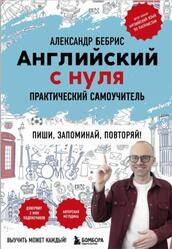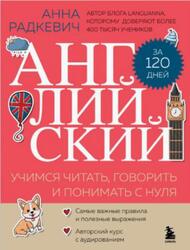Введение в перевод с русского языка на английский, Приемы и методы в помощь переводчику, Стрелкова Н.С., 2013.
Книга Н.С. Стрелковой «Введение в перевод с русского языка на английский. Приемы и методы в помощь переводчику» - это обобщение опыта многих десятилетий работы замечательного переводчика, редактора и преподавателя перевода в московском Инъязе. Написанная живым, ярким английским языком, книга предназначена для лиц, владеющих английским и русским языками и осваивающих навыки перевода.
Воспроизведение, распространение и доведение до всеобщего сведения данного произведения (полностью или частично) любым способом, в том числе путем перевода в электронные файлы и открытия доступа к таким файлам через информационно-телекоммуникационные сети и каналы связи, без договора с правообладателем и издательством запрещается и преследуется в соответствии с 4-й частью Гражданского кодекса РФ.
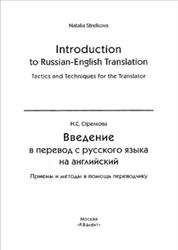
Principal Aims of Translation.
Translations must be:
Accurate. That means clarity in conveying the intention of the author as you understand it after reaching for the meaning behind the words. Such in-depth comprehension requires a feel for the right dictionary equivalent of the individual word, including denotation and connotation in the specific context. Accurate interpretation of the specific text involves detecting subtle differences in the degree of emphasis, lexical and syntactic, in order to get the author's idea across without being hypnotized by each individual word.
Correct. Employing good English grammar and stylistically and culturally appropriate usage is critical so that the register in English suits the relevant genre, fits in with the context, and meets the reader's expectations. In so doing, the translator can faithfully convey the image the author wishes to create.
Readable. Unfortunately, translated literature, both factual and fictional, is often hard to read. Texts in translation are frequently clumsy where the original reads smoothly, or flat when the original is colorful. They may seem bombastic or oddly overstated. For the Russian reader, who can connect the dots in his native language, the intended meaning of the original will come through anyway, but a translator who adheres too closely to the Russian faces the ever-present problem of inappropriate usage in English, especially when making use of collocations in which the author’s idea can literally get “lost in the translation.”
Contents
Preface - Is this book for you?
Introduction - The Art of Translation
Chapter I: Principal Aims of Translation
Starling Out - A Framework for Analysis
Chapter 2: The Translation Process
Form and Function
Hints on Procedure
Changing Content
Chapter 3: Accuracy - The Essence of Translation
What Makes a Translation Accurate?
Key words vs. props
“Process nouns” as props
Props partnering key words
Identifiers - When do we need them?
Organizers to orient the reader
Sense Categories: The Main Thrust
Cause - “I low come ...?”
Purpose - “What for...?”
Contrast - “Yes, but...”
Negation - “Just say no!”
Conditionality - “What if...?”
Ambiguity - Not to panic!
Cognates, false friends and true enemies
Caiques: “May I borrow that...?”
Syntax, Word Order, and the Message
Discovering function through syntax
Context - Its crucial importance
Polysemantic and high-frequency units
Other high-frequency words and phrases
Emphasis and Dе-еmphasis
Intensifiers (amplifiers)
Emphasis, or the lack of it, for easier reading
Repetition
I low to tone down a sentence - and why
Using modals and “modals”
“Agenda” Attitude, Point of View', Value Judgment, Implied Message
Favorable - objective unfavorable
Irony and sarcasm
Loaded words and implication
Variations on the theme of “blah-blah-blah”
Diminutives and augmentatives
Diminutive forms of names and other words
Вы or ты?
Rhetorical and Pragmatic Factors
Chapter 4: How Professionals Maneuver Around Difficulties
Chapter 5: Achieving Readability
Russian “All-purpose” Verbs
“Body language” in Metaphor and Idiom
Anglo-Saxon and Phrasal Verbs
Active or Passive?
Delays and Interruptions
Adjective Forms
Some Russian Sentence Patterns
Experimenting with syntax
Verbosity - How to Avoid It
Noun-verb ratio
Chapter 6: Correctness - Grammar and Usage in English
Grammar - the Road from Russian to English
Verb tenses and aspects
Particles, connectors and conjunctions
Fillers
Interjections
Names and Numbers - Getting Them Right
Russian and foreign names
Numerical problems
Punctuation - Focusing the Attention
The comma
Question marks and exclamation points
The colon
The dash
Quotation marks
Ambiguous quotation marks
Register - A Suitable Setting
Formal or informal?
Elevated rhetoric
“Learned” words / “Long words“
“Humanizing”
Informal styles: colloquial, conversational, familiar
Chapter 7: Editing for Clarity, Ease and Effect
Dictionaries - In Print and Online
Searching... for what? (not a word, I hope)
Chapter 8: Notes on Everyday Russian Culture
The Terminology of Education
Chapter 9: Practice Texts
Glossary
Bibliography
About the Author.
Бесплатно скачать электронную книгу в удобном формате, смотреть и читать:
Скачать книгу Введение в перевод с русского языка на английский, Приемы и методы в помощь переводчику, Стрелкова Н.С., 2013 - fileskachat.com, быстрое и бесплатное скачивание.
Скачать djvu
Ниже можно купить эту книгу, если она есть в продаже, и похожие книги по лучшей цене со скидкой с доставкой по всей России.Купить книги
Скачать - pdf - Яндекс.Диск.
Дата публикации:
Теги: учебник по английскому языку :: английский язык :: Стрелкова
Смотрите также учебники, книги и учебные материалы:
Следующие учебники и книги:
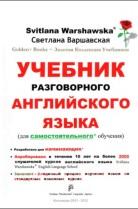 Самоучитель разговорного английского языка, Варшавская С., 2011 — Учебник разработан для самостоятельного изучения английского языка. Апробирован в течение 10 лет на более 2000-слушателей курсов английского языка Svitlana Warshawska … Книги по английскому языку
Самоучитель разговорного английского языка, Варшавская С., 2011 — Учебник разработан для самостоятельного изучения английского языка. Апробирован в течение 10 лет на более 2000-слушателей курсов английского языка Svitlana Warshawska … Книги по английскому языку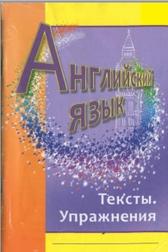 Английский язык, тексты, упражнения, Шереметьева А.В., 2012 — Вошедшие в сборник небольшие рассказы и задания помогут начинающим изучать английский язык. Учитель может использовать предложенный материал на уроке или … Книги по английскому языку
Английский язык, тексты, упражнения, Шереметьева А.В., 2012 — Вошедшие в сборник небольшие рассказы и задания помогут начинающим изучать английский язык. Учитель может использовать предложенный материал на уроке или … Книги по английскому языку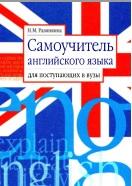 Самоучитель английского языка для поступающих в вузы, учебное пособие, Разинкина Н.М., 2002 — Пособие содержит тексты с грамматическими и лексическими комментариями, заданиями на активизацию материала и тесты, позволяющие контролировать уровень знаний и умений. … Книги по английскому языку
Самоучитель английского языка для поступающих в вузы, учебное пособие, Разинкина Н.М., 2002 — Пособие содержит тексты с грамматическими и лексическими комментариями, заданиями на активизацию материала и тесты, позволяющие контролировать уровень знаний и умений. … Книги по английскому языку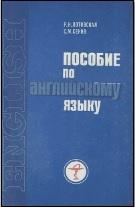 Пособие по английскому языку для студентов-медиков, Лотовская Р.Н., Сенив С.М., 1980 — Учебное пособие по английскому языку состоит из девяти разделов (Sections): I. The Public Health Service; II. Physiology; III. Therapy; IV. … Книги по английскому языку
Пособие по английскому языку для студентов-медиков, Лотовская Р.Н., Сенив С.М., 1980 — Учебное пособие по английскому языку состоит из девяти разделов (Sections): I. The Public Health Service; II. Physiology; III. Therapy; IV. … Книги по английскому языку
Предыдущие статьи:
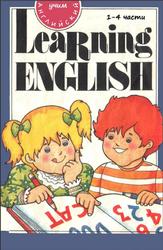 Учим английский, методические указания и ключи к урокам, часть 1, 1994 — Четырехтомник Учим английский посвящается памяти выдающегося педагога, талантливого методиста и лингвиста Валентины Скулльтэ. Трехтомное издание этого пособия в 1991 г. … Книги по английскому языку
Учим английский, методические указания и ключи к урокам, часть 1, 1994 — Четырехтомник Учим английский посвящается памяти выдающегося педагога, талантливого методиста и лингвиста Валентины Скулльтэ. Трехтомное издание этого пособия в 1991 г. … Книги по английскому языку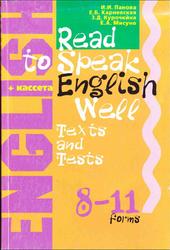 Читай и говори по-английски, Read to Speak English Well, 8 11 класс, Панова И.И., Карневская Е.Б., Курочкина З.Д., Мисуно Е.А., 2006 — Книга состоит из двух частей. Тексты для чтения (Часть 1) условно ориентированы на два уровня владения иностранным языком в соответствии … Книги по английскому языку
Читай и говори по-английски, Read to Speak English Well, 8 11 класс, Панова И.И., Карневская Е.Б., Курочкина З.Д., Мисуно Е.А., 2006 — Книга состоит из двух частей. Тексты для чтения (Часть 1) условно ориентированы на два уровня владения иностранным языком в соответствии … Книги по английскому языку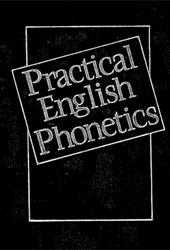 Практическая фонетика английского языка, Карневская Е.Б., Раковская Л.Д., Мисуно Е.А., 1990 — Пособие состоит из двух частей. вводно-коррективного и основного курсов. Каждый раздел в обеих частях пособия содержит теоретические сведения о звуковых … Книги по английскому языку
Практическая фонетика английского языка, Карневская Е.Б., Раковская Л.Д., Мисуно Е.А., 1990 — Пособие состоит из двух частей. вводно-коррективного и основного курсов. Каждый раздел в обеих частях пособия содержит теоретические сведения о звуковых … Книги по английскому языку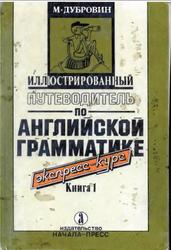 Иллюстрированный путеводитель по английской грамматике, Экспресс-курс, Дубровин М.И., 1992 — Книга построена как набор красочно оформленных схематических ситуаций и сюжетов, помогающих понять и запомнить английскую грамматику. Изданная дважды - в … Книги по английскому языку
Иллюстрированный путеводитель по английской грамматике, Экспресс-курс, Дубровин М.И., 1992 — Книга построена как набор красочно оформленных схематических ситуаций и сюжетов, помогающих понять и запомнить английскую грамматику. Изданная дважды - в … Книги по английскому языку


